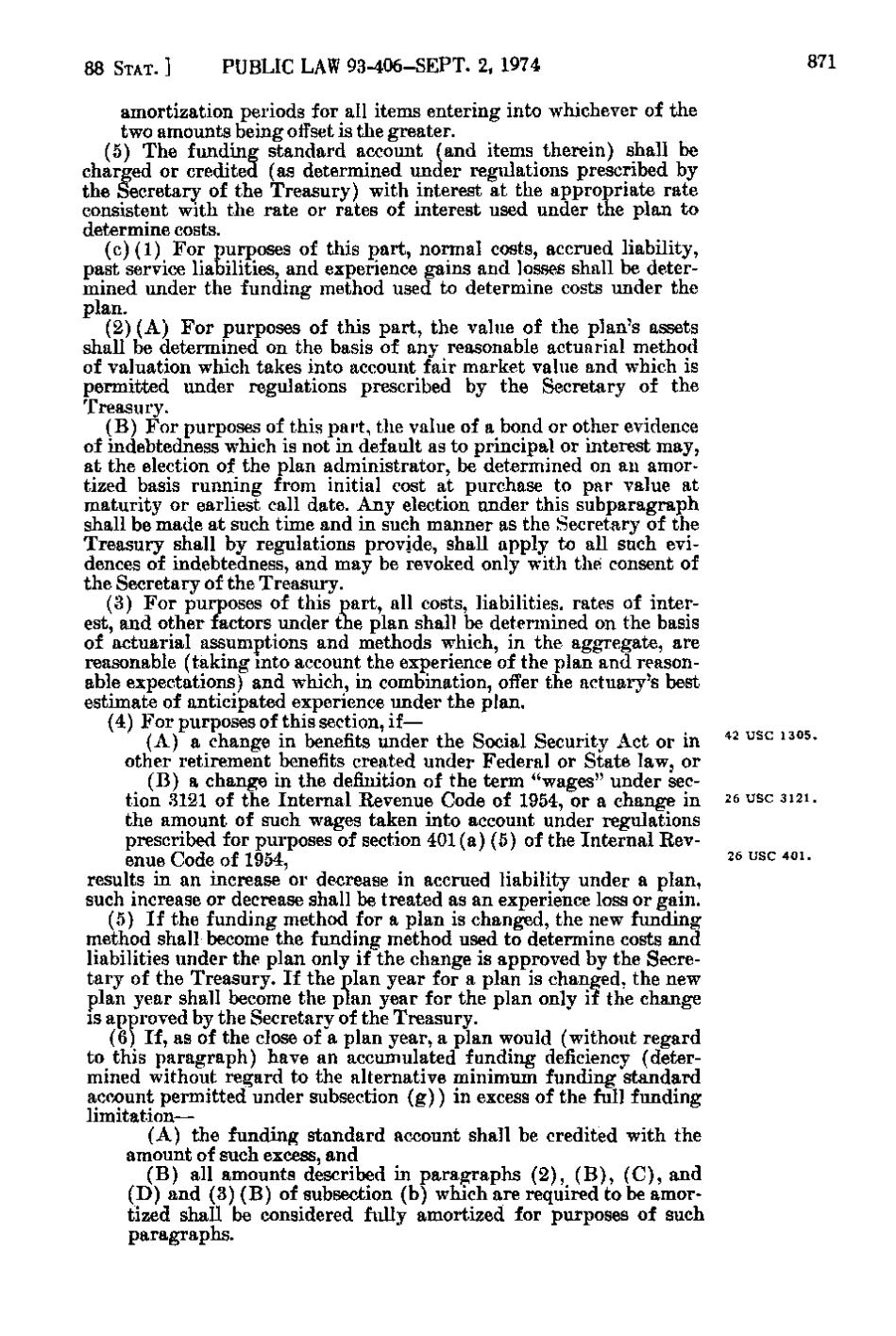88 STAT. ]
PUBLIC LAW 93-406-SEPT. 2, 1974
amortization periods for all items entering into whichever of the two amounts being offset is the greater. (5) The funding standard account (and items therein) shall be charged or credited (as determined under regulations prescribed by the Secretary of the Treasury) with interest at the appropriate rate consistent with the rate or rates of interest used under the plan to determine costs. (c)(1) For purposes of this part, normal costs, accrued liability, past service liabilities, and experience gains and losses shall be determined under the funding method used to determine costs under the plan. (2)(A) For purposes of this part, the value of the plan's assets shall be determined on the basis of any reasonable actuarial method of valuation which takes into account fair market value and which is permitted under regulations prescribed by the Secretary of the Treasury. (B) For purposes of this part, the value of a bond or other evidence of indebtedness which is not in default as to principal or interest may, at the election of the plan administrator, be determined on an amortized basis running from initial cost at purchase to par value at maturity or earliest call date. Any election under this subparagraph shall be made at such time and in such manner as the Secretary of the Treasury shall by regulations provide, shall apply to all such evidences of indebtedness, and may be revoked only with the consent of the Secretary of the Treasury. (3) For purposes of this part, all costs, liabilities, rates of interest, and other factors under the plan shall be determined on the basis of actuarial assumptions and methods which, in the aggregate, are reasonable (taking into account the experience of the plan and reasonable expectations) and which, in combination, offer the actuary's best estimate of anticipated experience under the plan. (4) For purposes of this section, if— (A) a change in benefits under the Social Security Act or in other retirement benefits created under Federal or State law, or (B) a change in the definition of the term "wages" under section 3121 of the Internal Revenue Code of 1954, or a change in the amount of such wages taken into account under regulations prescribed for purposes of section 401(a)(5) of the Internal Revenue Code of 1954, results in an increase or decrease in accrued liability under a plan, such increase or decrease shall be treated as an experience loss or gain. (5) If the funding method for a plan is changed, the new funding method shall become the funding method used to determine costs and liabilitievS under the plan only if the change is approved by the Secretary of the Treasury. If the plan year for a plan is changed, the new plan year shall become the plan year for the plan only if the change is approved by the Secretary of the Treasury. (6) If, as of the close of a plan year, a plan would (without regard to this paragraph) have an accumulated funding deficiency (determined without regard to the alternative minimum funding standard account permitted under subsection (g)) in excess of the full funding limitation— (A) the funding standard account shall be credited with the amount of such excess, and (B) all amounts described in paragraphs (2), (B), (C), and (D) and (3)(B) of subsection (b) which are required to be amortized shall be considered fully amortized for purposes of such paragraphs.
871
'*^ ^^^ ^^°^* 26 USC 3121. 26 USC 401.
�
